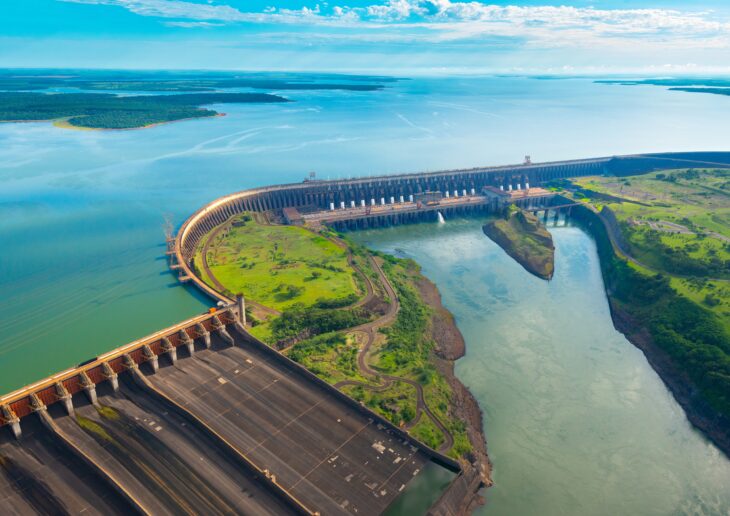The Water Industry: A Fountain of Opportunities Economic Impact Report
April 19, 2023

New Report Details Challenges and Opportunities in the Water/Wastewater Industry
Facing drought, high population needs, and water-dependent industries like the state’s $51 billion agricultural enterprise, few sectors are more critical to California than water/wastewater. Yet, a new report details an acute shortage of qualified workers in this area– a potential crisis that is also an opportunity for students who want to enter a stable, well-paying industry.
The eagerly anticipated report was unveiled at the March 28 Water Energy Education Alliance (WEEA) Leadership Roundtable— an online, interactive meeting for industry partners and educators. Researchers from the Centers of Excellence for Labor Market Research (COE) presented the key findings of the report, titled “California Workforce Needs in the Water/Wastewater Industry,” providing the very first comprehensive statewide overview of workforce needs for the industry.
“This report could help increase outcomes for our students,” says Dr. Jesse Crete, director of the Orange County COE, who led the study in partnership with the San Diego/Imperial COE. “We want to encourage more students to go into these [water/wastewater] programs and get them into these well-paying jobs that are also great careers.”
The report addresses critical workforce challenges brought to light by previous studies, including an aging workforce getting close to retirement, a lack of workplace diversity, skill gaps, and a general lack of career awareness among students for eight mission-critical occupations essential to water/wastewater operations. The report also offers recommendations for employers and community colleges to address current and future workforce challenges.
The report’s findings were drawn from in-depth labor market analysis, an industry survey with more than 500 responses, and interviews with 20 community colleges across the state that offer water/wastewater programs.
“We had a huge response rate,” says Crete. “We are very confident in our data and findings and proud of this report.”
Key Findings
Here are some highlights of the report’s findings:
· There are eight mission-critical occupations essential to water/wastewater operations. These are positions that are difficult to fill and typically require at least a high school diploma:
1. Calibration Technologists and Technicians
2. Electrical and Electronic Engineering Technologists and Technicians
3. Electricians
4. Industrial Machinery Mechanics
5. Machinists
6. Maintenance and Repair Workers, General
7. Operating Engineers and Other Construction Equipment Operators
8. Water and Wastewater Treatment Plant and System Operators
· There is significant demand but low supply for these mission-critical occupations in California. There are 37,459 openings for these occupations in the state, while there are only 5,413 qualified workers to fill these jobs. The water/wastewater industry needs 4,442 of these workers.
· Community colleges account for 71% of the supply from educational institutions in California and provide training programs for all but one mission-critical occupation.
· Water/wastewater companies rely on online recruiting platforms and company job boards for recruitment but report difficulty finding qualified candidates.
· Nearly 60% of survey respondents indicated that these platforms ranked as their top two resources for hiring; community colleges ranked fourth.
· Employers have the most difficulty finding job candidates with relevant prior work experience, adequate technical skills, and required licenses or certifications.
· The most needed skills identified by survey respondents (employers) do not align with those requested in online job postings for mission-critical occupations. This potential misalignment could contribute to challenges in hiring qualified employees.
· Water/wastewater agencies have created opportunities for internal employees to be developed, promoted in-house opportunities, and have partnered with educational institutions.
· Equity and diversity gaps were found, including:
- The highest-paying entry-level positions have the highest percentage of white workers.
- Hispanic or Latino workers dominate in the lowest-paying positions.
- Women are extremely underrepresented in both jobs and training programs.
· These agencies report that 5% of their current workforce is eligible to retire without penalty within the next five years.
· 37% of workers in the eight mission-critical occupations are 50 and older, which is comparatively higher than all occupations throughout the state and the California population.
· California Community Colleges offer training programs for all but one mission-critical occupation, and students in those programs are generally more diverse than the current water/wastewater mission-critical workforce.
Recommendations
Among the report’s recommendations:
o Increase awareness of water/wastewater opportunities to attract more students and thereby create more potential job candidates.
o Partnerships should be strengthened between the Community Colleges and water/wastewater providers to bring awareness of job opportunities, develop cooperative work-based learning opportunities, address equity gaps, and increase diversity in the industry.
o Further research is recommended on emerging occupations that will develop due to technological advancements, legislation/regulatory requirements, or other factors in preparation for future industry needs.
o The water/wastewater industry should conduct further research to determine if there is a misalignment between the skills in online job postings and those considered essential by hiring managers. If so, the degree of misalignment should be assessed, essential skills for each mission-critical occupation should be identified, and industry and community colleges should collaborate through advisory boards to refine curriculum and address these skills.
Orange County community colleges are perfectly positioned to address these workforce needs with quality training programs, a diverse student population, and a track record of success in partnering with industry to fulfill employment needs.
“There is a lot of interest from both industry and community colleges to further develop partnerships. Our community colleges work hand-in-hand with industry advisory boards already. So, there are partnerships already there we can build on,” says Crete.
Santiago Canyon College offers a Water Utility Science program, while a wide range of programs throughout the OC community college system teach relevant and transferable skills to the water/wastewater industry. Learn more about these programs.




